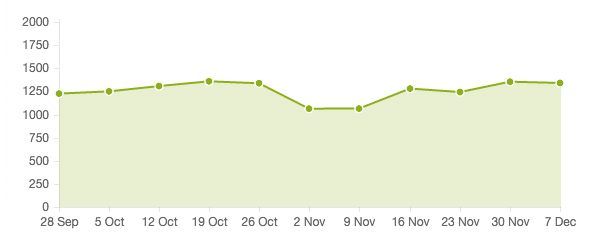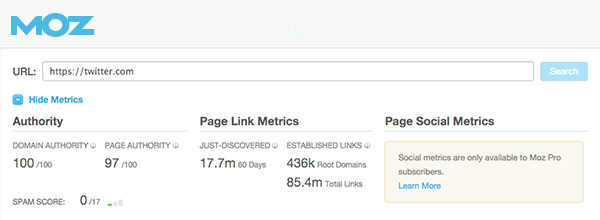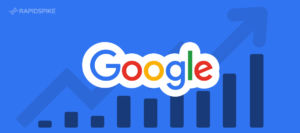In this complicated world – where we are overwhelmed with data – it is often easy to lose sight of the basics. This is especially true in online business. Recently we have started to look at the type of management data we can provide to support a successful online business. What we found during our research was quite interesting so I thought I would write a post about some of our findings.
Unique Vs Returning Visitors
Think of a high street shop. Unique visitors are new customers walking through the door. Returning visitors are your regulars. To grow a business you need to keep your regulars happy and attract new customers.
So let’s look at unique visitors. If one person visited your site once and the second five times then you have two unique visitors. Tracking unique visitors through tools such as Google Analytics is a great way to measure your marketing activity. If you are increasing your marketing effort, then you should see an increase in new people visiting your site.
This metric alone clearly tells you that your messaging is of interest to a growing number of people. Measuring unique visitors is especially useful if you undertake offline marketing. If you placed an ad during a given month then its success in part could be measured by the increase in unique visitors during that period.
The other metric to consider is returning visitors. If this number is steadily growing then this indicates that your site has compelling or useful information that is encouraging people to return. Some call this “stickiness”!
You could therefore assume that the more people that revisit your site, the more likely they are to buy or recommend your services.
Referrals
Once you understand your visitor numbers the next question to ask is where the traffic came from. Clearly tracking referrals allows you to understand what channels are working and where to spend most of your time and efforts. If a popular blog for example is generating a noticeable amount of inbound traffic, then it might be prudent to formalise the relationship in some way as it is clearly of importance to your site.
Bounce Rate
If a person leaves your site quickly it is just like someone entering your store and having a quick glance and then leaving. When this happens, it is a lost opportunity. Tracking bounce rate helps you to understand whether your content is engaging and relevant to the audience. If your bounce rate is high, then it is a clear indicator that changes need to be made to your site. It could also indicate you are attracting the wrong audience. Either way a high bounce rate isn’t good so tracking bounce rate is another great way to measure progress.
Exit Pages
Bounce rate and exit pages are distinctly different. Bounce rate is simply a measure of people bouncing off the first page they arrive at whereas an exit page is the page a visitor leaves after visiting more than one page. If one of your pages has an unusually high exit rate then consider the reason why.
- Are they not finding the information they need?
- Why are they choosing to leave at this point?
As these visitors didn’t leave immediately, it is fair to assume that they had an interest, so what can be done to encourage them to stay? By measuring and improving exit pages you will undoubtedly notice an increase in goal conversion – happy days!
Landing Pages
The opposite of an exit page is a landing page. Normally your home page is your most popular landing page. The home page is used for navigation so what pages are working for you beyond the home page? Measure this data and make sure you give the visitor the information they need. People searching for a high value item will want more information versus someone who is looking to buy a low cost item.
Speed
It is a given these days that speed directly affects bounce rate. A slow site is simply intolerable to most visitors. Measure your speed especially during busy periods. Monitor the network, the service layer and the application layer to gain a full overview of your hosting server. All have a part to play and each one individually can affect the performance of your site. Based on our customer data your target web page response time should be under one second.
Furthermore speed also affects your Google ranking factor and contributes to a poor user experience which ultimately leads to a lower conversion rate.
Conversion Rate
Of all of the metrics you might consider goal conversion rate to be the most important. Stated simply, it is your number of visitors divided by your completed goals. A goal could be a free trial sign up or a submitted sales enquiry form. Either way, understanding your conversion ratio is key to measuring your sites performance. After all, completed goals lead to sales. If your site has a low conversion rate, you are either attracting the wrong kind of visitor to your site or your site is not effective at convincing your visitors that you offer the right solution to their problem.
Moz Page & Domain Authority Ranking
Moz combines a number of metrics and calculates your page and domain authority. The higher your Moz Rank the more likely you are to be found on an organic search. The most popular sites have the highest Moz rank. Moz is particularly useful for measuring SEO performance. If you are investing heavily in marketing and SEO then your Moz rank should increase.
Using the Moz API, we are working on providing the ability to measure your rank within RapidSpike. Until then, you can go here.
Alexa Ranking
Alexa ranking is a way of measuring the popularity of a web site by the number of visitors it attracts. Unfortunately, Alexa ranking only works when the visitor has an Alexa toolbar but it does provide you with an indicator. Over time if you are attracting more people to your website then your Alexa rank should improve.
Here are the most popular websites in the world according to Alexa.
How Often Does Your Website Error?
If your website is too slow, not only will your visitors become frustrated but it might be an indication that your server is close to edge as well. Every site needs solid foundations so it is important to keep an eye on the basics. For example, would you know if your site had a 408 Request Timeout error or a 504 Gateway Timeout error? Do you even monitor how often those type of faults happen? The truth is, most people don’t.
We all know what a 404 Not Found error is but few people monitor how many times this happens? Have you got visibility of bad links? Stay on top of the HTTP status codes because every visitor that gets an error page assumes its your fault.
The 504 Gateway Timeout means that one server did not receive a timely response from another server that it was accessing while attempting to load the web page or fill another request by the browser. Most of the time, this means that the other server is down or not working properly.
The 408 Request Timeout means the request you sent to the website server (e.g. a request to load a web page) took longer than the website’s server was prepared to wait.










